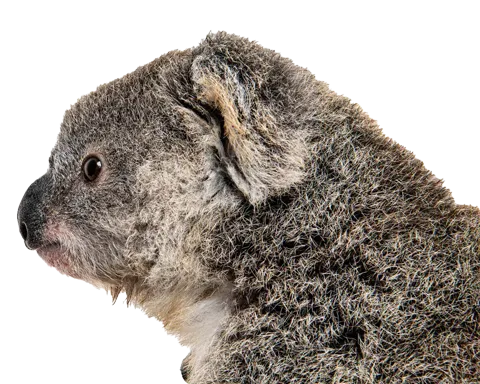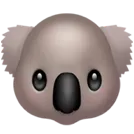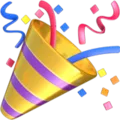We were delighted to welcome six new volunteers to the Central Branch team who successfully completed our self-paced, three-week online Rescue & Care Course during November and practical training on Sunday 12 December 2021. This was held at The Coal Loader, North Sydney Council’s Centre for Sustainability and also attended by trainees from other branches.
Three of Central’s new Angels –Joanna Nedelkovski, Raelene Dojcinovic and Mikala Welsh came heaven sent with prior wildlife experience.
Since graduating with their certificates and equipped with rescue baskets, they’ve responded to the call from Sydney Wildlife Rescue Headquarters (SWR HQ) and undertaken a number of successful rescue and care missions – from the tiniest fledgling bird, to the cutest possum, the largest macropod and everything in between … including ‘Grace’ the flying-fox!
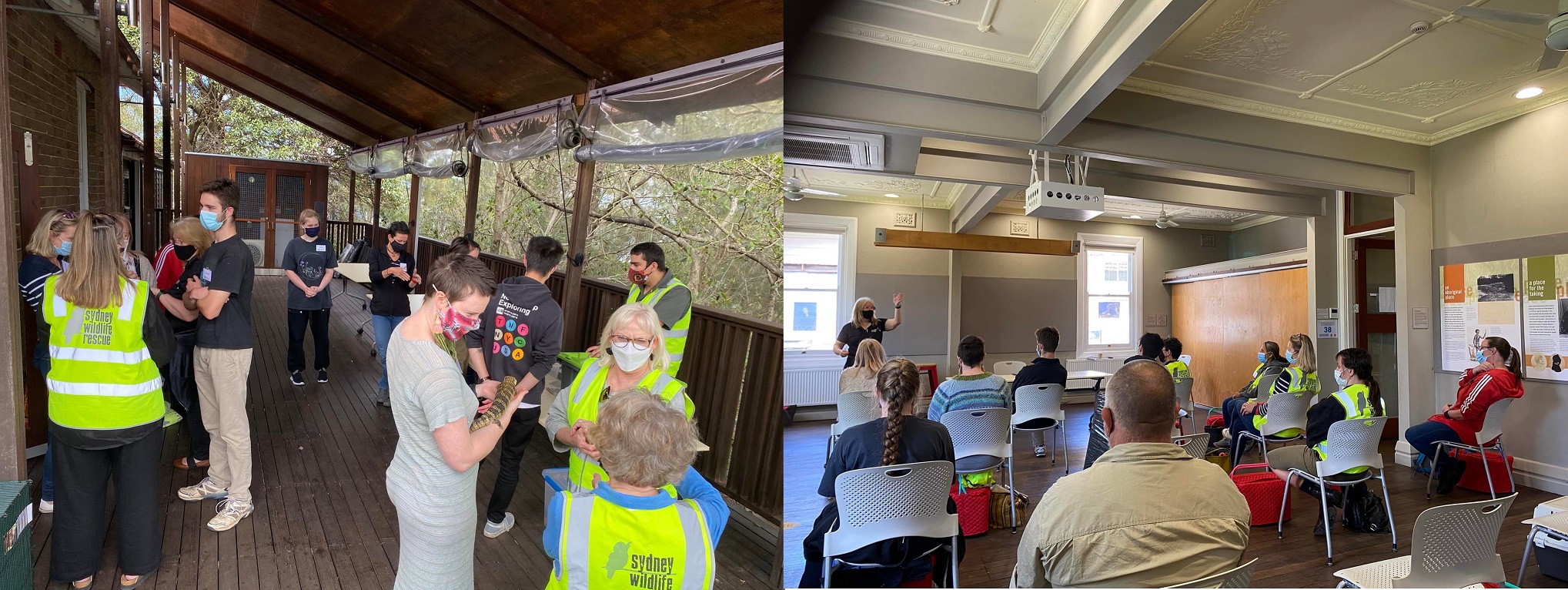
Practical training on Sunday 12 December 2021 at The Coal Loader, North Sydney Council’s Centre for Sustainability – images Michael Quinnell
Joanna Nedelkovski
She began sewing pouches and bat wraps before becoming the Sydney Airport coordinator as donated items arrived from the United Kingdom – but yearned to do more. Joanna signed up with another wildlife organisation which received a lot of media at the time and even completed specialist training in macropods, possums and flying-foxes. But in 2021, she decided to join Sydney Wildlife Rescue after hearing some really positive feedback about the ethos and support of volunteers.
‘I am very pleased with my decision to switch across – the guidance and camaraderie has been amazing.’
%20(450%20%C3%97%20550%20px).png)
Joanna bottle-feeding a juvenile kangaroo
While Joanna doesn’t have a background in veterinary care or nursing, she just loves animals. Ironically, prior to rescuing and caring for wildlife she was petrified of needles. Now she injects fluids and antibiotics for animals in care!
‘If I had my time again, I probably would have gone down the vet science path.’
Her feedback on the Sydney Wildlife Rescue & Care Course was extremely positive. Joanna found the online component to be very well laid out, easy to follow and educational.
‘The practical afternoon was even better with educational animals.’
Joanna thinks the buddy system works well too. Her buddy is Christian Parsa, Central’s reptile coordinator.
‘You just know that someone is there to help should you need it.’
And she reckons species coordinators are a special bunch.
‘They are full of advice and always positive – the glue behind the volunteers.’
According to Joanna, each rescue presents its own complexities and she loves the challenge, putting her hand up to try and attend to any animal near her that’s in trouble. Joanna started rescuing immediately after the course and some of those weren’t simple. She’s encountered currawongs high up in unit block skylights; possums wedged tight behind water heaters and strangled in football nets; a goshawk concussed after colliding with a glass pool fence; and exhausted cormorants, sea turtles and pelicans entangled in fishing line.
‘Many rescues were only successful in the sense that the animal’s suffering was eased and ended humanely by a vet, yet others got a second chance because we were called. It’s those that drive me and help when tears are shed.
Joanna’s first mission with Sydney Wildlife Rescue was a callout to rescue an ibis and transport it to a vet.
‘These majestic birds are only appreciated beyond their “bin chicken” image once you have a chance to rescue, raise or rehabilitate one.’
But her most memorable assignment was the recent rescue of a flying-fox named Grace during the torrential rains with fellow ‘Central Angel’, Raelene. Working as a team is always easier if you can sort out the logistics and availability. The Member of the Public (MOP) hadn’t been in his yard for a few days (judging by the bat’s condition) and Grace was shivering, starving and exhausted. Joanna actually talked to Grace (a bit of batchat), reassuring her she was there to help. She could see she was critical, so started to cut her out before Raelene arrived, but it took both of them to gently remove Grace from the netting. They gave her much needed glucose and a little juice, as well as tear replacement lubricant in her eyes which prevents ulcerated irises from dehydration. The MOP kindly provided hot water and warmed up some subcutaneous fluids which they administered. Grace was then placed in a warm towel on a sling in a special carrier and broughtback to Joanna’s for further assessment and most importantly to warm up in a humidicrib. She had horrible swelling in her wrist, injuries to her wings as well as her mouth. They provided more subcutaneous fluids, some bruise cream onthe wings, and once warm and dry raced her over to an experienced carer for some much-needed intensive care.
‘We named her Grace as she was ever so graceful and trusting of us. She is still in care and looks promising for release, though is not out of the woods just yet.’
%20(900%20%C3%97%20400%20px).png)
Grace the flying-fox trapped in a fruit net and on the way to the recovery ward
Rescues like these can be avoided by following the safe netting of fruit trees advice on our website. The rule of thumb is if you can squeeze your little finger through the net, then it’s unsafe:
https://www.sydneywildlife.org.au/post/safe-netting-of-your-fruit-trees
Joanna describes Sydney Wildlife Rescue’s network of vets as just amazing humans on another level. Her local vet Dr Shelton Smith of St George Animal Hospital also treats her pets and is a godsend. He has always made himself and his team available for wildlife. Infact, Joanna has lost count of the times she has called the clinic at all hours from a rescue site asking if they could see and triage a native bird or animal.
‘I would be lost without their support and that goes for all vets.’
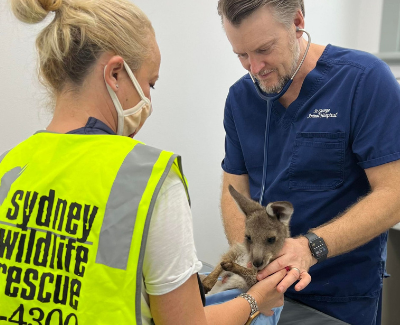
Joanna taking juvenile kangaroo for a check up with Dr. Shelton Smith at St George Animal Hospital
In addition to her rescue and care work, Joanna has also checked out SWR HQ where she picked up supplies and worked the phones which she found to be a rewarding experience.
‘It was actually nice to see how the rescues start from the very first call to 9413 4300.’
Growing up in Poland, Joanna is fascinated by our precious marsupials and pinches herself every time she has anopportunity to rescue, raise and care for macropod and possum joeys. She’s looking forward to further training in wombats too.
‘Being multi-lingual and understanding different cultures is advantageous as a wildlife rescuer. Just being able to say hello in a few languages makes the MOPs connect more.’
__
%20(400%20%C3%97%20550%20px)%20(1).png)
Joanna bottle-feeding kangaroo joey
Joanna has two pieces of advice for people considering becoming a volunteer. First, your car boot space slowly becomes non-existent as it turns into a ‘Rescue 101 Kit’ complete with nets, cages, towels, stretchers etc.
‘In fact, for many rescues, I “MacGyver it!"'
And second, let the fear of the unknown drive you, but just remember to assess before you act. And if in doubt, call your species coordinator or buddy as they are there to help you.
‘Rescues can be very rewarding, but heartbreaking at times, so cry if you need to. Just remember why you joined in the first place − to help our wildlife and with each rescue you are doing your bit. That drives me to keep going.’
Raelene Dojcinovic
Like Joanna, Raelene was a member of another large wildlife organisation which she found quite impersonal, so she made the change to Sydney Wildlife Rescue. Her experience since joining has been nothing but positive.
‘I was assigned a buddy who was really helpful in guiding and navigating me and I have found all the species coordinators to be extremely friendly and approachable. But most of all, I have found that you are respected as a volunteer.’
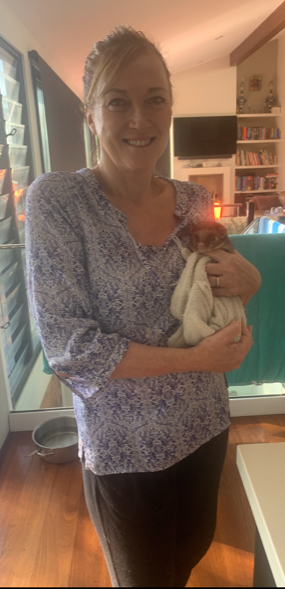
Raelene with ringtail possum in care
Coming from such a large organisation to a smaller one, Raelene was initially concerned that she may not have enough rescues and animals to care for, but she hasn’t been disappointed. Since joining, Raelene’s cared for baby brushtail possums, several adult possums, lorikeets and fig birds. In fact, she currently has five possums and a lorikeet in care!
‘I like to both rescue and care, but I particularly love caring, especially the animals that have high needs such as babies or very sick adults.’
Raelene’s background is in human nursing and she has found this particularly helpful when caring for mammals as many of the systems are the same.
‘I am an ex intensive care nurse, which I think shows in my passion to care for high-need animals. I much prefer caring for animals than humans.’
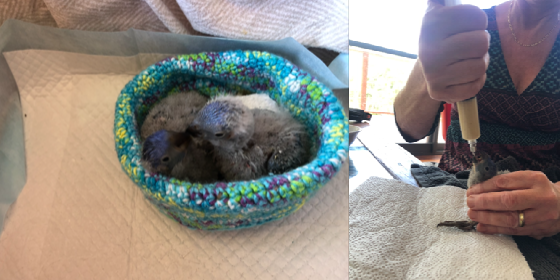
Raelene crop-feeding lorikeets in her ICU ward
Although Raelene had previously completed wildlife training, she found Sydney Wildlife Rescue’s self-paced online Rescue & Care Course over three weeks a great resource and a good refresher as some things are done differently. She particularly enjoyed the practical afternoon which provided the essential information such as how to setup a cage and what food and foliage wildlife in care require.
‘It was great to meet other new members and key people. I really liked the rescue basket and bits and bobs of supplies they gave out to get you started.’
Raelene’s buddy Kelly Murphy was quite new to Sydney Wildlife Rescue herself, but she helped her navigate the new systems including who was who and who to go to. While experienced herself, Raelene believes a buddy is important for new volunteers to help with nerves.
‘Access to species coordinators is essential – they are really helpful with advice, guidance, buddying animals and discharge planning. Every coordinator I have met has been respectful and friendly.’
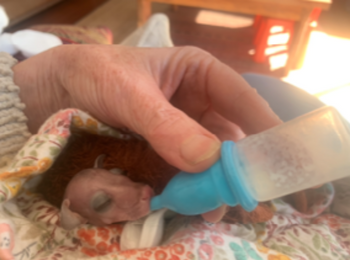
Brushtail possum joey in Raelene’s safe hands
Based in the Sutherland Shire, Raelene appreciates how busy her local vets are and how they do their best to see our wildlife in a timely manner. This is despite being unpaid and often having limited experience with native birds and animals. Having said that, Raelene has built a relationship with one local vet who allows her to make appointments and go into the consult with the animal.
‘I have learnt a lot doingthis, as being present [with the vet] also enables me to voice my concernswhich gives overall better care to the animal.’
Raelene has participated in a few Central Branch meetings where she enjoys hearing the rescue and care statistics as well as the opportunity to ask questions. She’s also visited SWR HQ on a couple of occasions to pick up supplies and spent an afternoon learning the (02) 9413 4300 rescue line procedures. And Raelene’s ready to sign up for more specialist courses!
One of Raelene’s favourite experiences was her bat handling day, spent with experienced bat carers at a home with a small creche.
‘It was great handling the young bats and learning about them in practice, rather than a book. Bats get such a bad rap, but they are extremely cute.’
Raelene understands some animals die in care despite the best efforts of MOPs, vets and Sydney Wildlife Rescue volunteers as things can happen with wildlife that we don’t expect. While you will always question yourself, and whether you could have done things differently, Raelene knows it’s important not to beat yourself up.
‘Cry and debrief with another member who will understand. Then make sure you share your knowledge, both good and bad. But most of all, don't stop rescuing and caring – the wildlife need us.’
Dr Mikala Welsh
Mikala has been involved with animals in one way or another for most of her life. Prior to graduating as a vet in 2009, she worked in pet retail, with horses and at the RSPCA.
She became aware of Sydney Wildlife Rescue going through University and her love of wildlife led to her being responsible for native birds and animals that came into the clinic. When working at the North Shore Vet Hospital she developed a friendship with Diane Jenner (Sydney Wildlife Rescue volunteer and Treasurer). A move to Canberra prevented her from becoming involved at that time, but having returned to Sydney, she was looking for ways to get involved.
‘I saw that Sydney Wildlife Rescue had a mobile clinic and reached out to the organisation and have been welcomed with open arms.’
%20(400%20%C3%97%20550%20px).png)
Mikala with a juvenile swamp wallaby
To volunteer for the mobile clinic, Mikala needed to become a member, so she signed up for the Rescue & Care Course as she’s always open to learning. She thought the online component was great and enabled a large amount of theoryt o be shared. This volume of knowledge is usually not disseminated in a face-to-face course.
‘The practical afternoon was fun. It was good to put faces to names and meet new colleagues!’
Mikala’s buddy Ben Mason has been a great resource and member Bronwyn Gould has been helpful too. As a volunteer organisation, sometimes it can be difficult to get a feel for how things work and who to talk to as everyone is very busy. Having a buddy means there’s a friendly person at the end of the phone to ask questions and provide advice.
Her first assignment was to collect a lorikeet from a MOP in the city. Unfortunately, it had beak and feather disease so required euthanasia. But that is part of the job.
Mikala just loves working with such a great group of people at Sydney Wildlife Rescue’s mobile clinic where she gets to see a variety of animals. On her last visit there were plenty of reptiles and even a couple of flying-foxes.
‘I really enjoy talking to the team, meeting carers and learning from the awesome vets. I am hoping that we can organise a regular day for Central Branch!’
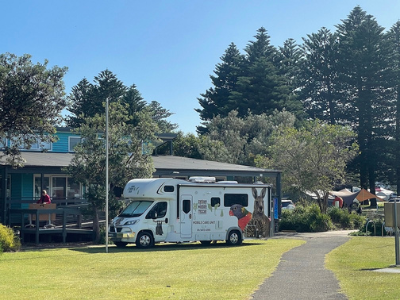
Sydney Wildlife Rescue mobile clinic – image Margaret Woods
Being particularly fond of reptiles, Mikala is hoping that her veterinary experience will enable her to fast track into the course.
Mikala would encourage others thinking about enrolling in the next Rescue & Care Course to just do it!
‘The beauty of volunteering is that you can do as much or as little as suits you. Every little bit counts – there is a need for transporting animals and helping out on the 9413 4300 hotline if you are not able to rehabilitate or care for animals in your home.’
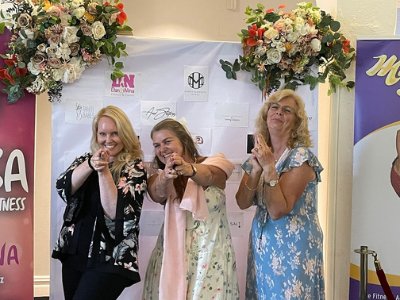
Sydney Wildlife Rescue’s legendary northern Angels – Lynleigh Greig, Sonja Elwood (SWR founder) & Joan Reid OAM at fundraising event - image Margaret Woods
We hope you are inspired by our new ‘Central Angels’, their buddies, species coordinators and would like to bepart of the Sydney Wildlife Rescue team.
Our next self-paced online Rescue & Care Course kicks off on 4 June 2022 complete with soft-copy manuals, educational videos and 10 modules covering an introduction to SydneyWildlife Rescue, possums, lizards & turtles, birds, self-care and your first rescue.
After successfully completing the online component over three weeks, trainees will attend a practical afternoon where they receive instruction in basic elements of wildlife handling and cage setup from experienced species coordinators before receiving their graduation certificates and rescue baskets.
So, what are you waiting for? Join up with a friend or family member on the following link today as we need more Angels in Central and across Sydney.
%20(2).png)
https://www.sydneywildlife.org.au/become-a-volunteer
*Quotes adapted from Charlie’s Angels franchise created by Ivan Goff & Ben Roberts and owned by Sony Pictures Entertainment.
